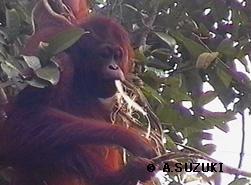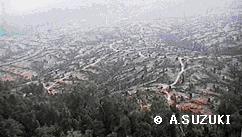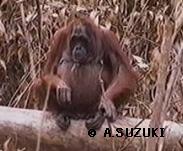 |
![]()
 ”Orang-utan Distribution” |
|
The Orang-utans and Their Habitat By Dr. Akira SUZUKI Protection of the Orang-utans is based on the steadfast conservation of the forests which are their habitat. The Kutai National Park, where we base our research, is situated on the equator. As one of the few tropical rain forests inhabited by the Orang-utans, it was designated a National Park in 1985, the first of its kind in Borneo. When I first ventured into this area, access by car was impossible since there were no roads. After trekking for several days to the nearest village, we had to go upriver by boat for a further six hours to get to what is now our research centre. |
|
The Importance of Saving the Rain Forests By Dr. Akira SUZUKI It had always been thought that orang-utans lived deep in the natural rain forests, eating mainly berries. But huge fires spread through these forests in 1983 and 1997-8, destroying the apes’ habitat.  
|